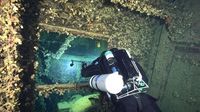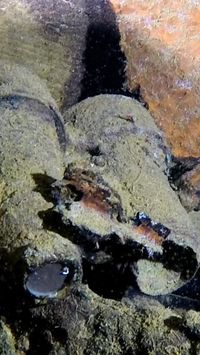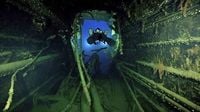For the first time since the Britannic—sister ship to the ill-fated Titanic—sank in the Aegean Sea over a century ago, divers have recovered a trove of artifacts from its watery grave. The discovery, announced by Greece's Culture Ministry, marks a significant milestone in maritime archaeology and offers a rare glimpse into a chapter of history that has long rested beneath the waves.
The Britannic, launched in 1914 by the White Star Line, was originally designed as a luxury liner destined to ferry passengers across the Atlantic in opulent comfort. But the outbreak of World War I changed its fate. Requisitioned by the British Admiralty, the ship was converted into the largest hospital ship of the era, tasked with transporting wounded soldiers and medical staff through perilous waters.
On November 21, 1916, while en route to the island of Lemnos, tragedy struck. The Britannic hit a German mine off the coast of Kea, a Greek island lying about 45 miles southeast of Athens. The impact was catastrophic: the ship sank in less than an hour, and of the more than 1,060 people on board, 30 lost their lives when their lifeboats were drawn into the ship’s still-turning propellers. The rest managed to escape, but the Britannic was lost to the depths, coming to rest nearly 400 feet below the surface—accessible only to the most skilled technical divers.
Fast forward to May 2025, and a new chapter unfolds. An 11-member team of deep-sea divers embarked on a weeklong operation, braving strong currents and low visibility to explore the wreck. According to the Greek Culture Ministry, the dive was no small feat: “Conditions at the wreck site were particularly challenging due to currents, depth and low visibility,” the ministry said, emphasizing the technical prowess required for such a mission. The team relied on closed-circuit rebreather equipment, a necessity at such depths, and operated under the guidance of British historian Simon Mills, founder of the Britannic Foundation. The operation was also supervised by Greece's Ephorate of Underwater Antiquities, ensuring that the recovery was both safe and respectful of the site’s historical significance.
The artifacts retrieved from the Britannic tell a story of both luxury and utility, echoing the ship’s dual identity as a floating palace and a lifeline for the wounded. Among the items brought to the surface were the ship’s lookout bell, the port-side navigation lamp, silver-plated first-class trays, ceramic tiles from a Turkish bath, a pair of passenger binoculars, and a porcelain sink from second-class cabins. Each object speaks to a different aspect of life aboard the Britannic—whether it was the elegance enjoyed by first-class passengers or the everyday realities of crew and medical staff.
The Culture Ministry shared images and video footage of the divers at work, revealing the eerie beauty of the wreck and the painstaking care taken in recovering each item. The bell, once used to signal the ship’s watch, and the navigation lamp, which would have illuminated the vessel’s passage, are particularly poignant reminders of the Britannic’s final voyage. The ceramic tiles, once part of a lavish Turkish bath, and the silver-plated trays, hint at the luxury that defined the White Star Line’s fleet. Meanwhile, the binoculars and porcelain sink offer a more personal glimpse into the daily routines of those on board.
After their recovery, the artifacts were transported to Athens, where they are now undergoing careful conservation in specialized laboratories. The Greek Culture Ministry has announced that these treasures will take pride of place in the permanent collection of a new Museum of Underwater Antiquities, currently under development at the port of Piraeus. The museum, set to become a major destination for maritime history enthusiasts, will feature a dedicated World War I section with the Britannic artifacts as its centerpiece.
The significance of this recovery extends beyond the artifacts themselves. The Britannic, as the largest hospital ship of its time, played a crucial role in the war effort. Its loss was a blow not just to the Allies’ logistical capabilities, but also to the morale of those who depended on such vessels for safe passage and medical care. The fact that the wreck lies at such depth—nearly 400 feet, or 120 meters—has long made exploration and recovery a daunting challenge. Only with recent advances in diving technology has it become possible to reach and safely retrieve objects from the site.
Simon Mills, the British historian who organized the recovery, has dedicated much of his career to preserving the legacy of the Britannic. His work, alongside that of the Greek authorities and the skilled divers, ensures that the ship’s story will not be forgotten. “Conditions at the wreck site were particularly challenging,” the Culture Ministry reiterated, underscoring the perseverance required to bring the Britannic’s history back to the surface.
The Britannic’s story is inextricably linked to its more famous sister ship, the Titanic, which sank in 1912 after striking an iceberg. Both ships were built at the Harland and Wolff shipyard in Belfast, and both represented the pinnacle of early 20th-century maritime engineering. The third vessel in the group, the RMS Olympic, sailed from 1911 to 1935 and underwent safety improvements after the Titanic disaster. Unlike its siblings, the Olympic enjoyed a long and storied career before being retired.
The recovery of the Britannic’s artifacts not only sheds light on a lesser-known maritime tragedy but also highlights the enduring fascination with the era of grand ocean liners. For historians, divers, and the public alike, these objects serve as tangible links to a world that was forever changed by war and disaster. The new Museum of Underwater Antiquities in Piraeus promises to bring this history to life, offering visitors the chance to see up close the relics of a ship that bridged the worlds of luxury travel and wartime sacrifice.
As the artifacts undergo conservation and await their debut at the museum, the story of the Britannic continues to captivate. From the depths of the Aegean to the galleries of Athens, the ship’s legacy endures—reminding us that even after a century beneath the waves, some stories are simply too compelling to remain hidden.


